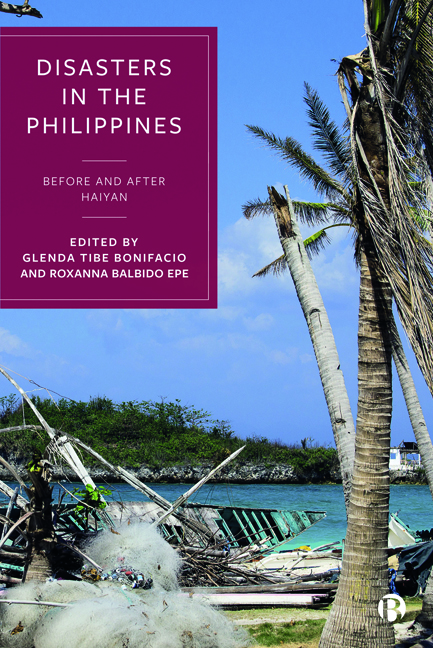Conclusion (For Now): Post-Haiyan Philippines and Beyond
Published online by Cambridge University Press: 18 January 2024
Summary
Super typhoon Haiyan or Yolanda left such profound realities of global climate change, destruction, failures, and foresight of a disaster since November 8, 2013. It was first recorded to hit Palau and Micronesia before making landfall as a Category 5 storm in the Philippines (World Vision 2022). Considered one of the worst disasters in recent decades with 313kph winds and 7m waves in the Philippines (BBC Bitesize n.d.), typhoon Haiyan also made landfall in Vietnam on November 11 as a tropical storm with less intensity; other countries affected included China and Cambodia (Al Jazeera 2013; OCHA 2013). In the Philippines, typhoon Haiyan resulted in over 6 million displaced people, 1.9 million homeless, more than 7,000 deaths, and an economic impact of US$5.8 billion (BBC Bitesize n.d.). We may use many superlatives around Haiyan and the fact remains it is only an example of what unfolds in our midst— a disaster.
Disasters intersect with social, political, and other dimensions of power that make vulnerable people and communities at more risk from natural hazards and continuing environmental degradation in the age of the Anthropocene. We acknowledge the effects of human acts that have put the Earth in peril. In this collection, we have focused on typhoon Haiyan, before and after, as a sort of midway discourse of the past disasters that occurred in the Philippines that remained unlearned to keep the country disaster resilient as its fate as one of the most at-risk countries in the world for typhoons, floods, earthquakes, and volcanic eruptions. Typhoon Haiyan points to moving ahead with the challenges of island geographies, political will, centralization, bureaucratic (in)competencies, disaster risk reduction and management, humanitarian, and post-disaster development response, amongst others.
All the chapter contributions in this book are concrete illustrations of the economics, sociology, politics, psychology, and governance that shape the development landscape post-disaster of the affected population, communities, institutions, and the international community. The interplay of disaster risk reduction and climate change adaptation is invariably influenced by the capacity in disaster risk proofing development agenda, the cultural production of hazards, the geophysical and environmental characteristics, and timely response.
- Type
- Chapter
- Information
- Disasters in the PhilippinesBefore and After Haiyan, pp. 348 - 350Publisher: Bristol University PressPrint publication year: 2023

